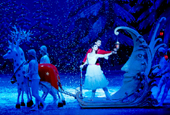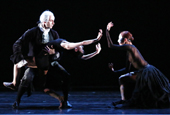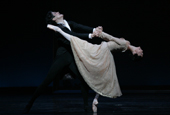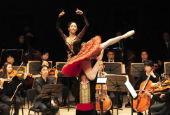Two Western ballerinas were working on their moves along with other dancers in a practice studio at the Korean National University of Arts' (KNUA) southern Seoul campus in Seocho-dong. They were Ilaria Martucci, a 20-year-old ballerina from Rome and Stephanie Schenberger, a 17-year-old American. The two danced across the studio and showed off their butterfly-like motions, listening to instructions from the KNUA's dance professor Kim Sun-hee. Kim spoke in both Korean and English, mixing in ballet terms, and instructed all the dancers on specific details, from the height of their hands to their overall posture.
This is the fifth time for Martucci to come to Korea since her first trip here in 2011. Every time, she trains with Professor Kim. She saw Korean dancers perform so beautifully at the Premio Roma Dance Competition in 2010, and she was so impressed with them, that she decided to come to Korea to study ballet. At the competition, the Korean contestants received gold medals in the senior men's, senior women's, junior men's and junior women's divisions.
"I've never seen such good dancers," said Martucci. "Later, I met Professor Kim and came to study in Korea."
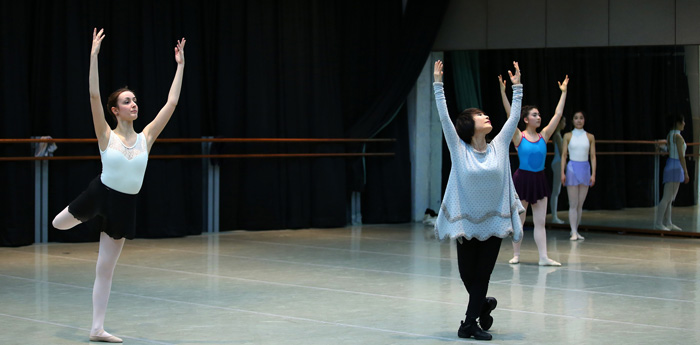
"Martucci came to Korea and practiced with other students here several times," said Kim. "For a long time now, she wanted to train in Korea, so she came all the way here."
"She was working on a project, so I trained her," Kim said. "Martucci has good body proportions. She continues to learn ballet here in Korea."
Martucci has been training with Kim since 2011. With Kim's help, she received a silver medal at the Sicilia Barocca International Dance Competition in the following year.
A high school student, Schenberger followed her father to Korea, who works as a defense attaché at the U.S. Embassy in Seoul. Before coming to Korea, she trained with the Washington Ballet. At that time, Kim was teaching a few students at the ballet company and Schenberger met her there for the first time. When Schenberger came to Korea in 2014, she contacted Kim and she has been training with Kim since last summer.
Dancers have started coming to learn ballet in Korea, as Korean dancers over the past few years have made great strides in international competitions and hold prestigious positions in ballet companies across the world.
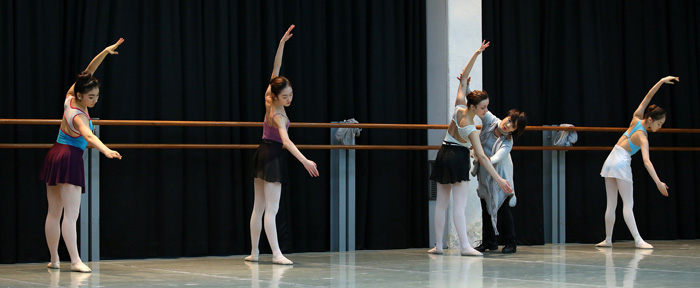
Over the past five years, Korean dancers started appearing in major events on the international ballet scene. Many Koreans, including Kim Kimin of the Mariinsky Ballet in Russia, Park Sae-eun of the Paris Opera Ballet in France and Han Seo-hye and Chae Ji-young of the Washington Ballet, are taking major roles in prestigious international ballet theater companies.
In particular, in 2011 Kim Kimin, a 23-year-old male soloist, joined the Mariinsky Ballet in Moscow, the center of the world's ballet scene. Only one month after joining the company, Kim started taking on major roles. Since then, he has performed over 100 times. He was also invited to perform with the American Ballet Theatre (ABT) as a Guest Artist at the New York Metropolitan Opera House in June 2015. All these dancers trained in Korea before they joined international ballet companies.
"Ballet education in Korea is some of the best in the world," said Kim. "Now, Korean ballerinas are definitely first-class and at the top of their league."
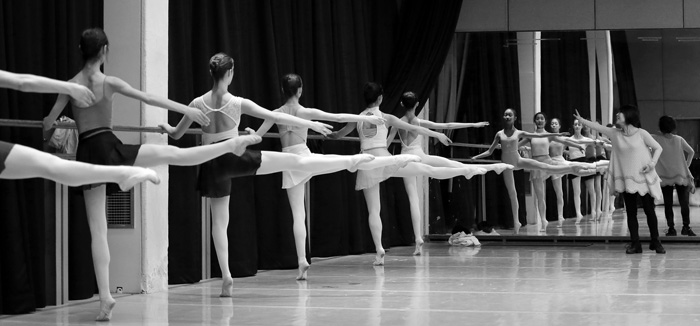
Ilaria Martucci and Stephanie Schenberger, now training at the KNUA, were interviewed recently about how they ended up in Korea to study ballet.
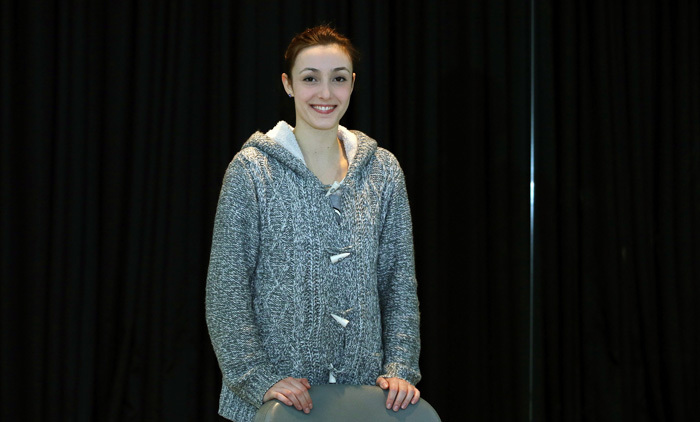
- Why did you come to Korea to study ballet instead of going to Europe or to the U.S.?
Why did I come to Korea? Well, I saw Korean ballerinas at the Premio Roma Dance Competition in 2010, and I've never seen such good dancers. I met them and we became friends. Their technique was very good. They were all students here at this school. Then, I met professor Kim Sun-he. She agreed to teach me.
I came to Korea in 2011 for the first time. I took some classes. This is one of the best ballet schools in the world. I am really glad that I can study here.
- When did you decide to become a ballerina? When was your first exposure to ballet?
I started ballet when I was six or seven years old. I went to learn ballet because everybody does at that age. At that point, it was not like I wanted to become a ballerina.
Then I continued to study ballet and I later decided to become a dancer.
- How do you feel about learning ballet at the KNUA?
Our professor teaches with a lot of passion. She takes care of every single student. I was really impressed.
I was thinking about studying ballet here for a long time, ever since I was 15 years old. I told my mom again and again that I wanted to go to Korea. When I came here, I was really excited. Every day is a great challenge for me and I am going well beyond my limits. I am learning something new every day and it is exciting. Even if I am tired at the end of the day, I am always happy. I talked to my mom through Skype, and my mom said she can see that I am very happy here, even though I looked very tired. It was my dream to come here and to study ballet. So I am happy every day.
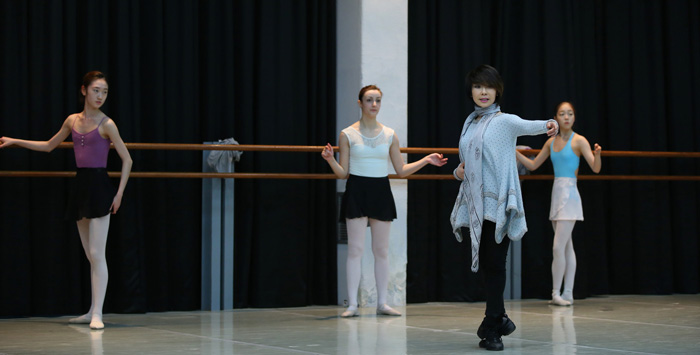
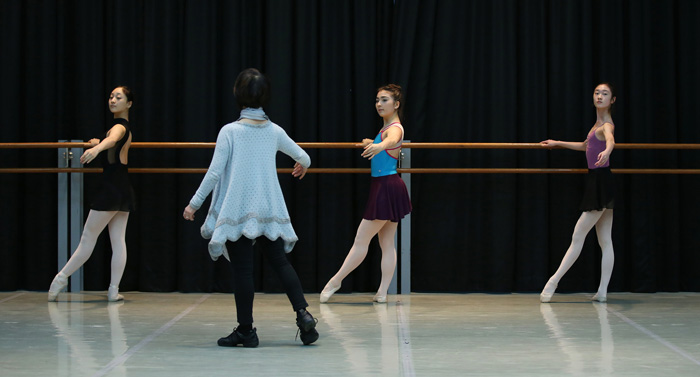
- How is Korean ballet different from European ballet?
I don't think it's that different. In dancing, if you dance well, everybody can see you are good. Teachers here take good care of every student. They pay attention to every detail very carefully. I am not sure, but in Italy, they don't pay as much attention to detail. Korea is better in that way. This school is better.
- How do you like living in Korea? What are Koreans and Korean society like, honestly?
Life here is fanatic. Everything goes "ppali ppali" ("quickly, quickly'). It's a little hard for me because it is the first time for me to do everything alone. I spend four hours on public transportation, including subway and buses, to get here from the Yonsei campus. It's a little bit hard, but I like it.
From my experience, everyone is really kind. Italians can be a little bit rude.
I have great friends at this university. They always help me with everything I need, or whenever I have problems. When I am lost on the street, there are people who take me to the place where I need to go. That would never happen in Italy.
It's a little bit competitive, as I heard. Competition can be good for me because it helps me learn and to grow. When someone is better, I can figure out what he or she does to get better. However, I have some friends who say that Korean society is very competitive. They sometimes get really stressed out.
- As what kind of ballerina would like to be remembered?
I want to be remembered as a ballerina who could express her emotion as she performs. It is the most important thing for a dancer. I would like to make the audience feel what I feel on stage.
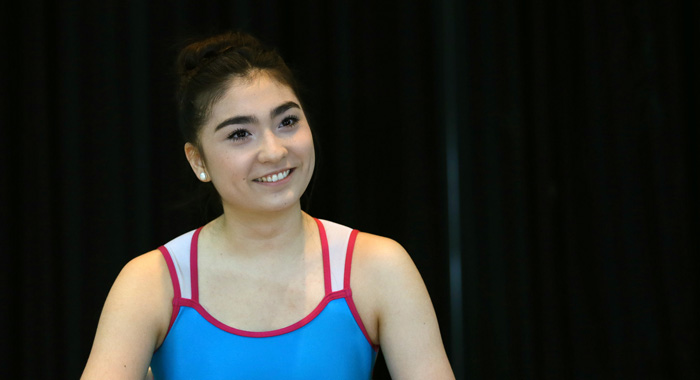
- Why did you come to Korea to study ballet, instead of going to Europe or to the U.S.?
Honestly, Korea is one of the best places to learn ballet. They have some of the best students in the world. It is amazing. This campus just adds to that.
I met professor Kim Sun-hee in Washington, D.C. When she was in D.C., I was with the Washington Ballet Company.
She taught a few students at the Washington Ballet Company. Her teaching style is different from that of all my other teachers. She produces amazing dancers. That drew me to Korea. When I moved to Korea, my mom and I got in touch with her to see if I could possibly learn a little more from her.
- When did you decide to become a ballerina? When was your first exposure to ballet?
I started ballet when I was six years old, mostly because my older sisters did it. I started to get serious about it at the age of 12. I was in Hawaii. My teachers encouraged me to pursue a career in ballet. They gave me confidence that I could actually do it.
- How do you feel about learning ballet at the KNUA?
I started studying under professor Kim in the summer of 2014. My first response was that I was terrified. Everybody is so good, especially the students at this school. They are the top students in all of Korea. It is really inspiring. It is really an eye-opening experience.
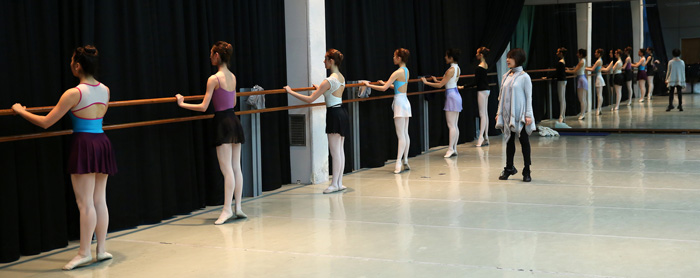
- How is Korean ballet different from European ballet?
From U.S. ballet, it is definitely different. Kim emphasizes a different style of ballet. Kim is detail oriented. Looking at companies in the U.S. and at ballerina's movements there, Korean ballet has much more structure to it. It is definitely different. It all starts from teaching.
- How do you like living in Korea? What are Koreans and the Korean society like, honestly?
Korean society is very different from the U.S. Living in Korea is really fun. I really love the city. There are lots of things to do and places to go. There is much more to do here than in places where I used to live in the U.S.
- As what kind of ballerina would like to be remembered?
I would like to be remembered as a passionate dancer who does it because she loves it. You are not going to be perfect, but as long as your heart is in it, that's the only thing that really matters.
By Limb Jae-un
Photos: Jeon Han
Korea.net Staff Writers
jun2@korea.kr
This is the fifth time for Martucci to come to Korea since her first trip here in 2011. Every time, she trains with Professor Kim. She saw Korean dancers perform so beautifully at the Premio Roma Dance Competition in 2010, and she was so impressed with them, that she decided to come to Korea to study ballet. At the competition, the Korean contestants received gold medals in the senior men's, senior women's, junior men's and junior women's divisions.
"I've never seen such good dancers," said Martucci. "Later, I met Professor Kim and came to study in Korea."

Kim Sun-hee (middle) instructs Ilaria Martucci (left) and Stephanie Schenberger (second from right) at the KNUA near the Seoul Arts Center in southern Seoul on February 12.
"Martucci came to Korea and practiced with other students here several times," said Kim. "For a long time now, she wanted to train in Korea, so she came all the way here."
"She was working on a project, so I trained her," Kim said. "Martucci has good body proportions. She continues to learn ballet here in Korea."
Martucci has been training with Kim since 2011. With Kim's help, she received a silver medal at the Sicilia Barocca International Dance Competition in the following year.
A high school student, Schenberger followed her father to Korea, who works as a defense attaché at the U.S. Embassy in Seoul. Before coming to Korea, she trained with the Washington Ballet. At that time, Kim was teaching a few students at the ballet company and Schenberger met her there for the first time. When Schenberger came to Korea in 2014, she contacted Kim and she has been training with Kim since last summer.
Dancers have started coming to learn ballet in Korea, as Korean dancers over the past few years have made great strides in international competitions and hold prestigious positions in ballet companies across the world.

Professor Kim Sun-hee (second from right) corrects Ilaria Martucci's posture.
Over the past five years, Korean dancers started appearing in major events on the international ballet scene. Many Koreans, including Kim Kimin of the Mariinsky Ballet in Russia, Park Sae-eun of the Paris Opera Ballet in France and Han Seo-hye and Chae Ji-young of the Washington Ballet, are taking major roles in prestigious international ballet theater companies.
In particular, in 2011 Kim Kimin, a 23-year-old male soloist, joined the Mariinsky Ballet in Moscow, the center of the world's ballet scene. Only one month after joining the company, Kim started taking on major roles. Since then, he has performed over 100 times. He was also invited to perform with the American Ballet Theatre (ABT) as a Guest Artist at the New York Metropolitan Opera House in June 2015. All these dancers trained in Korea before they joined international ballet companies.
"Ballet education in Korea is some of the best in the world," said Kim. "Now, Korean ballerinas are definitely first-class and at the top of their league."

Ballet students train in a KNUA studio.
Ilaria Martucci and Stephanie Schenberger, now training at the KNUA, were interviewed recently about how they ended up in Korea to study ballet.

Rome's Ilaria Martucci says she came to Korea after she was impressed with the excellent performance of Korean ballerinas at the Premio Roma Dance Competition.
- Why did you come to Korea to study ballet instead of going to Europe or to the U.S.?
Why did I come to Korea? Well, I saw Korean ballerinas at the Premio Roma Dance Competition in 2010, and I've never seen such good dancers. I met them and we became friends. Their technique was very good. They were all students here at this school. Then, I met professor Kim Sun-he. She agreed to teach me.
I came to Korea in 2011 for the first time. I took some classes. This is one of the best ballet schools in the world. I am really glad that I can study here.
- When did you decide to become a ballerina? When was your first exposure to ballet?
I started ballet when I was six or seven years old. I went to learn ballet because everybody does at that age. At that point, it was not like I wanted to become a ballerina.
Then I continued to study ballet and I later decided to become a dancer.
- How do you feel about learning ballet at the KNUA?
Our professor teaches with a lot of passion. She takes care of every single student. I was really impressed.
I was thinking about studying ballet here for a long time, ever since I was 15 years old. I told my mom again and again that I wanted to go to Korea. When I came here, I was really excited. Every day is a great challenge for me and I am going well beyond my limits. I am learning something new every day and it is exciting. Even if I am tired at the end of the day, I am always happy. I talked to my mom through Skype, and my mom said she can see that I am very happy here, even though I looked very tired. It was my dream to come here and to study ballet. So I am happy every day.


Ballet students train with KNUA professor Kim Sun-hee (second from left).
- How is Korean ballet different from European ballet?
I don't think it's that different. In dancing, if you dance well, everybody can see you are good. Teachers here take good care of every student. They pay attention to every detail very carefully. I am not sure, but in Italy, they don't pay as much attention to detail. Korea is better in that way. This school is better.
- How do you like living in Korea? What are Koreans and Korean society like, honestly?
Life here is fanatic. Everything goes "ppali ppali" ("quickly, quickly'). It's a little hard for me because it is the first time for me to do everything alone. I spend four hours on public transportation, including subway and buses, to get here from the Yonsei campus. It's a little bit hard, but I like it.
From my experience, everyone is really kind. Italians can be a little bit rude.
I have great friends at this university. They always help me with everything I need, or whenever I have problems. When I am lost on the street, there are people who take me to the place where I need to go. That would never happen in Italy.
It's a little bit competitive, as I heard. Competition can be good for me because it helps me learn and to grow. When someone is better, I can figure out what he or she does to get better. However, I have some friends who say that Korean society is very competitive. They sometimes get really stressed out.
- As what kind of ballerina would like to be remembered?
I want to be remembered as a ballerina who could express her emotion as she performs. It is the most important thing for a dancer. I would like to make the audience feel what I feel on stage.

Stephanie Schenberger talks about studying ballet at the KNUA.
- Why did you come to Korea to study ballet, instead of going to Europe or to the U.S.?
Honestly, Korea is one of the best places to learn ballet. They have some of the best students in the world. It is amazing. This campus just adds to that.
I met professor Kim Sun-hee in Washington, D.C. When she was in D.C., I was with the Washington Ballet Company.
She taught a few students at the Washington Ballet Company. Her teaching style is different from that of all my other teachers. She produces amazing dancers. That drew me to Korea. When I moved to Korea, my mom and I got in touch with her to see if I could possibly learn a little more from her.
- When did you decide to become a ballerina? When was your first exposure to ballet?
I started ballet when I was six years old, mostly because my older sisters did it. I started to get serious about it at the age of 12. I was in Hawaii. My teachers encouraged me to pursue a career in ballet. They gave me confidence that I could actually do it.
- How do you feel about learning ballet at the KNUA?
I started studying under professor Kim in the summer of 2014. My first response was that I was terrified. Everybody is so good, especially the students at this school. They are the top students in all of Korea. It is really inspiring. It is really an eye-opening experience.

Ballet students train at the KNUA.
- How is Korean ballet different from European ballet?
From U.S. ballet, it is definitely different. Kim emphasizes a different style of ballet. Kim is detail oriented. Looking at companies in the U.S. and at ballerina's movements there, Korean ballet has much more structure to it. It is definitely different. It all starts from teaching.
- How do you like living in Korea? What are Koreans and the Korean society like, honestly?
Korean society is very different from the U.S. Living in Korea is really fun. I really love the city. There are lots of things to do and places to go. There is much more to do here than in places where I used to live in the U.S.
- As what kind of ballerina would like to be remembered?
I would like to be remembered as a passionate dancer who does it because she loves it. You are not going to be perfect, but as long as your heart is in it, that's the only thing that really matters.
By Limb Jae-un
Photos: Jeon Han
Korea.net Staff Writers
jun2@korea.kr
